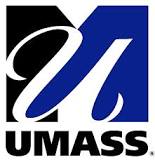Physiology and Therapeutic Management of Neonatal Abstinence Syndrome
| Status: | Enrolling by invitation |
|---|---|
| Healthy: | No |
| Age Range: | Any - 1 |
| Updated: | 8/8/2018 |
| Start Date: | April 2011 |
| End Date: | July 2019 |
The overall purpose of this project is to to quantify the physiology of neonatal drug
withdrawal and develop non-pharmacological techniques to help improve the therapeutic
management of Neonatal Abstinence Syndrome (NAS).
withdrawal and develop non-pharmacological techniques to help improve the therapeutic
management of Neonatal Abstinence Syndrome (NAS).
Novel approaches to diagnosing and treating Neonatal Abstinence Syndrome (NAS) are needed for
reducing prolonged pharmacological management, minimizing hospitalization and improving
developmental outcomes in drug exposed newborns. This study seeks to examine the physiology
and symptoms of drug withdrawal (e.g., irritability marked by movement activity;
cardio-respiratory instabilities) in infants exposed to drugs in utero and test whether
sensory stimuli (tactile, auditory) reduce dysregulated systems in the withdrawing infant.
Candidates at-risk for NAS due to fetal drug exposure will be identified to investigators by
the infant's primary medical caregiver. Investigators will use a modified-consecutive
sampling technique, restricted by equipment and personnel availability, for enrolling
infants. Participants will be studied throughout their hospitalization. Effects of
stimulation will be examined at different stages of withdrawal. Efficacy of stimulation will
be examined as a potential complementary treatment of NAS.
reducing prolonged pharmacological management, minimizing hospitalization and improving
developmental outcomes in drug exposed newborns. This study seeks to examine the physiology
and symptoms of drug withdrawal (e.g., irritability marked by movement activity;
cardio-respiratory instabilities) in infants exposed to drugs in utero and test whether
sensory stimuli (tactile, auditory) reduce dysregulated systems in the withdrawing infant.
Candidates at-risk for NAS due to fetal drug exposure will be identified to investigators by
the infant's primary medical caregiver. Investigators will use a modified-consecutive
sampling technique, restricted by equipment and personnel availability, for enrolling
infants. Participants will be studied throughout their hospitalization. Effects of
stimulation will be examined at different stages of withdrawal. Efficacy of stimulation will
be examined as a potential complementary treatment of NAS.
Inclusion Criteria:
Eligible subjects are infants currently inpatient in the NICU or Newborn Nursery at
University of Massachusetts Memorial Hospital and:
- Full-term infants (>37 wks gestational age) and late preterm infants (34-37 wks
gestational age)
- Newborns at risk for NAS due to fetal-drug exposure
- At-risk infants will be infants who present with confirmed meconium and/or urine
toxicology report (documented in medical chart review) for opioids (e.g., methadone,
buprenorphine/subutex, oxycodone, heroin); may also have prenatal exposure to
benzodiazepines, barbiturates, amphetamines, cannabinoids, alcohol, nicotine and/or
caffeine.
Exclusion Criteria:
Eligible infants meeting the inclusion criteria above will be excluded from participation
in the study if he/she:
- Born less than <34 weeks.
- Has a congenital abnormality
- Has a fetal anomaly
- Has hydrocephalus or intraventricular hemorrhage >grade 2
- Has a seizure disorder not related to drug withdrawal
- Has a clinically significant shunt
- Requires mechanical respiratory support
We found this trial at
1
site
Univ of Massachusetts Med School As the commonwealth's only public medical school, we take seriously...
Click here to add this to my saved trials
